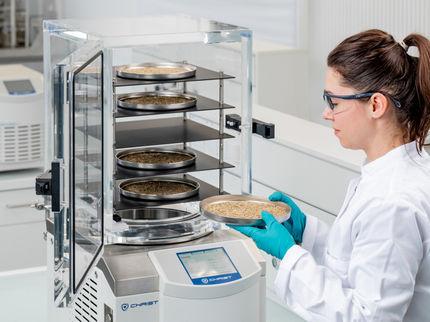| 5-hydroxytryptamine (serotonin) receptor 3A
|
| Identifiers
|
| Symbol
| HTR3A
|
| Alt. Symbols
| HTR3
|
| Entrez
| 3359
|
| HUGO
| 5297
|
| OMIM
| 182139
|
| RefSeq
| NM_000869
|
| UniProt
| P46098
|
| Other data
|
| Locus
| Chr. 11 q23.1-23.2
|
| 5-hydroxytryptamine (serotonin) receptor 3B
|
| Identifiers
|
| Symbol
| HTR3B
|
| Entrez
| 9177
|
| HUGO
| 5298
|
| OMIM
| 604654
|
| RefSeq
| NM_006028
|
| UniProt
| O95264
|
| Other data
|
| Locus
| Chr. 11 q23.1
|
| 5-hydroxytryptamine (serotonin) receptor 3C
|
| Identifiers
|
| Symbol
| HTR3C
|
| Entrez
| 170572
|
| HUGO
| 24003
|
| OMIM
| 610121
|
| RefSeq
| NM_130770
|
| UniProt
| A2RRR5
|
| Other data
|
| Locus
| Chr. 3 q27
|
| 5-hydroxytryptamine (serotonin) receptor 3D
|
| Identifiers
|
| Symbol
| HTR3D
|
| Entrez
| 200909
|
| HUGO
| 24004
|
| OMIM
| 610122
|
| RefSeq
| NM_182537
|
| UniProt
| Q70Z44
|
| Other data
|
| Locus
| Chr. 3 q27
|
| 5-hydroxytryptamine (serotonin) receptor 3E
|
| Identifiers
|
| Symbol
| HTR3E
|
| Entrez
| 285242
|
| HUGO
| 24005
|
| OMIM
| 610123
|
| RefSeq
| NM_182589
|
| UniProt
| Q495G3
|
| Other data
|
| Locus
| Chr. 3 q27
|
The 5-HT3 receptor is a member of the superfamily of ligand-gated ion channels, a family that also includes the neuronal nicotinic acetylcholine receptors (nAChRs), and the inhibitory neurotransmitter receptors for GABA (both GABAA and GABAC receptors) and glycine.[1][2] The 5-HT3 receptor is most closely related by homology to the nicotinic acetylcholine receptor.
The 5-HT3 receptor consists of 5 subunits arranged around a central ion conducting pore which is permeable to sodium, potassium, and calcium ions. Binding of the neurotransmitter 5-hydroxytryptamine (serotonin) to the 5-HT3 receptor opens the channel which in turn leads to an excitatory response in neurons. The 5-HT3 receptor differs markedly in structure and mechanism from the other 5-HT receptor subtypes which are all G-protein-coupled.
Structure
As with other ligand gated ion channels, the 5-HT3 receptor is composed of five subunits pseudo symmetrically arranged about a central ion conducting pore. These subunits are proteins encoded by the HTR3A, HTR3B, HTR3C, HTR3D, and/or HTR3E genes.
Functional channels may be comprised of five identical 5-HT3A subunits (homopentameric) or a mixture of 5-HT3A and one of the other four 5-HT3B,[3][4][5] 5-HT3C, 5-HT3D, or 5-HT3E subunits (heteropentameric).[6] It appears that only the 5-HT3A subunits form functional homopentameric channels. All other subunit subtypes must heteropentamerize with 5-HT3A subunits to form functional channels.
Tissue distribution
The 5-HT3 receptor is expressed throughout the central and peripheral nervous systems and mediates a variety of physiological functions.[2] On a cellular level, it has been shown that postsynaptic 5-HT3 receptors mediate fast excitatory synaptic transmission in rat neocortical interneurons and amygdala, and in ferret visual cortex.[7][8][9] 5-HT3 receptors are also present on presynaptic nerve terminals, where they are thought to mediate or modulate neurotransmitter release.[10][11][12]
Effects
When the receptor is activated to open the ion channel by agonists, the following effects are observed:
Agonists
Agonists (channel openers) for the receptor include:
- 2-methyl-5-HT
- chlorophenylbiguanide[13]
Antagonists
Antgonists (channel closers) for the receptor (sorted by their respective therapeutic application) include:
Discovery
Identification of the 5-HT3 receptor did not take place until 1986 because of a lack of selective pharmacological tool.[2] However, with the discovery that the 5-HT3 receptor plays a prominent role in chemotherapy- and radiotherapy-induced vomiting, and the concomitant development of selective 5-HT3 receptor antagonists to suppress these side effects aroused intense interest from the pharmaceutical industry[14][15] and therefore the identification of 5-HT3 receptors in cell lines and native tissues quickly followed.[2]
References
- ^ Maricq AV, Peterson AS, Brake AJ, Myers RM, Julius D (1991). "Primary structure and functional expression of the 5HT3 receptor, a serotonin-gated ion channel". Science 254 (5030): 432-7. doi:10.1126/science.1718042. PMID 1718042.
- ^ a b c d Yakel, JL (2000), Endo, M; Kurachi, Y & Mishina, M, eds., , vol. 147, Berlin: Springer-Verlag, pp. 541–560, ISBN 3540661271
- ^ Davies PA, Pistis M, Hanna MC, Peters JA, Lambert JJ, Hales TG, Kirkness EF (1999). "The 5-HT3B subunit is a major determinant of serotonin-receptor function". Nature 397 (6717): 359-63. doi:10.1038/16941. PMID 9950429.
- ^ Dubin AE, Huvar R, D'Andrea MR, Pyati J, Zhu JY, Joy KC, Wilson SJ, Galindo JE, Glass CA, Luo L, Jackson MR, Lovenberg TW, Erlander MG (1999). "The pharmacological and functional characteristics of the serotonin 5-HT3A receptor are specifically modified by a 5-HT3B receptor subunit". J Biol Chem 274 (43): 30799-810. PMID 10521471.
- ^ Monk SA, Desai K, Brady CA, Williams JM, Lin L, Princivalle A, Hope AG, Barnes NM (2001). "Generation of a selective 5-HT3B subunit-recognising polyclonal antibody; identification of immunoreactive cells in rat hippocampus". Neuropharmacology 41 (8): 1013-6. doi:10.1016/S0028-3908(01)00153-8. PMID 11747906.
- ^ Niesler B, Walstab J, Combrink S, Moeller D, Kapeller J, Rietdorf J, Boenisch H, Goethert M, Rappold G, Bruess M (2007). "Characterization of the Novel Human Serotonin Receptor Subunits 5-HT3C, 5- HT3D and 5-HT3E". Mol Pharmacol 71 (Mar 28): Epub ahead of print. doi:10.1124/mol.106.032144. PMID 17392525.
- ^ Férézou I, Cauli B, Hill EL, Rossier J, Hamel E, Lambolez B (2002). "5-HT3 receptors mediate serotonergic fast synaptic excitation of neocortical vasoactive intestinal peptide/cholecystokinin interneurons". J Neurosci 22 (17): 7389-97. PMID 12196560.
- ^ Sugita S, Shen KZ, North RA (1992). "5-hydroxytryptamine is a fast excitatory transmitter at 5-HT3 receptors in rat amygdala". Neuron 8 (1): 199-203. doi:10.1016/0896-6273(92)90121-S. PMID 1346089.
- ^ Roerig B, Nelson DA, Katz LC (1992). "Fast synaptic signaling by nicotinic acetylcholine and serotonin 5-HT3 receptors in developing visual cortex". J Neurosci 17 (21): 199-203. PMID 9334409.
- ^ Rondé P, Nichols RA (1998). "High calcium permeability of serotonin 5-HT3 receptors on presynaptic nerve terminals from rat striatum". J Neurochem 70 (3): 1094-103. doi:10.1046/j.1471-4159.1998.70031094.x. PMID 9489730.
- ^ Rondé P, Nichols RA (1997). "5-HT3 receptors induce rises in cytosolic and nuclear calcium in NG108-15 cells via calcium-induced calcium release". Cell Calcium 22 (5): 357-65. PMID 9448942.
- ^ van Hooft JA, Vijverberg HP (2000). "5-HT3 receptors and neurotransmitter release in the CNS: a nerve ending story?". Trends Neurosci 23 (12): 605-10. doi:10.1016/S0166-2236(00)01662-3. PMID 11137150.
- ^ a b c d e Rang, H. P. (2003). Pharmacology. Edinburgh: Churchill Livingstone. ISBN 0-443-07145-4. Page 187
- ^ Thompson AJ, Lummis SC (2006). "5-HT3 receptors". Curr Pharm Des 12 (28): 3615-30. PMID 17073663.
- ^ Thompson AJ, Lummis SC (2007). "The 5-HT3 receptor as a therapeutic target". Expert Opin Ther Targets 11 (4): 527-40. doi:10.1517/14728222.11.4.527. PMID 17373882.
| Ion channel, receptor: ligand-gated ion channels |
|---|
| Cys-loop receptors | 5-HT receptor (5-HT3 serotonin receptor (A)) - GABA receptor (GABA A (α1, α2, α3, α5, α6, β1, β2, β3, γ2, ε), GABA C (ρ1)) - Glycine receptor (α1) - Nicotinic acetylcholine receptor (α1, α2, α3, α4, α5, α7, β2, β3, β4, δ, ε, (α4)2(β2)3, (α7)5, Ganglion type, Muscle type) |
|---|
| Ionotropic glutamate receptors | AMPA (1, 2, 3, 4) - Kainate (1, 2) - NMDA (1, 2A, 2B, 2C, 2D) |
|---|
| ATP-gated channels | Purinergic receptors (P2X (1, 4, 5, 7)) |
|---|
|







